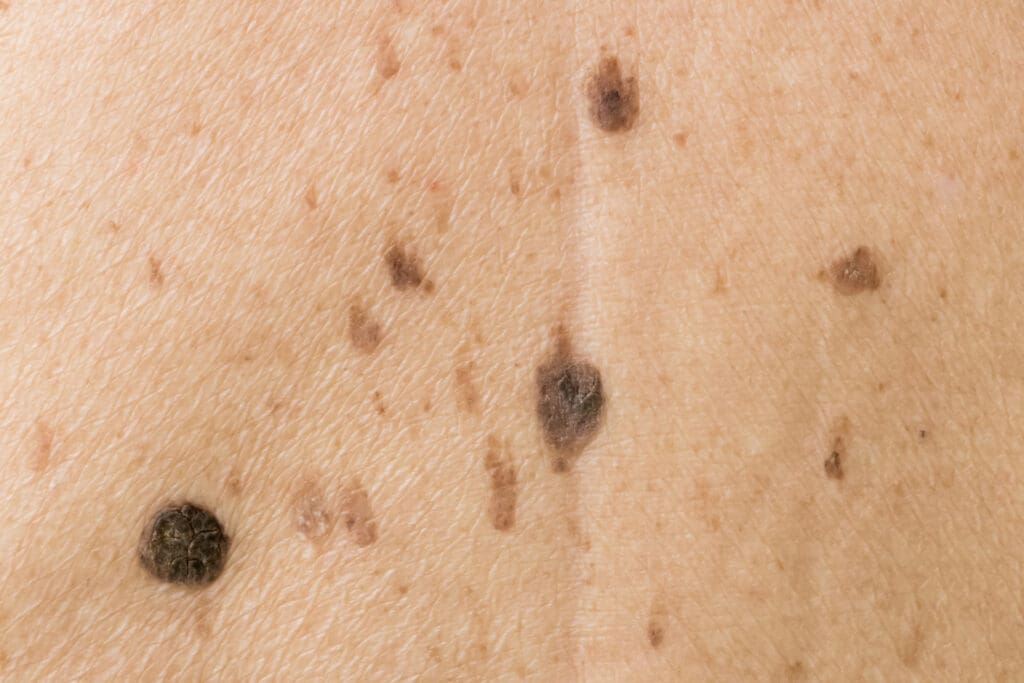Seborrheic Keratosis: Causes, Identification, and Treatment Options
Seborrheic keratoses affect us all at one point or another. What are these skin growths, how do you identify them, and what are your next steps if one appears? Whether you’re wondering about the unfamiliar spots popping up on your skin or just want to be prepared, our well-trained providers are here to answer all your seborrheic keratosis questions.
What is a seborrheic keratosis?
A seborrheic keratosis is a benign skin lesion. This means they are not at risk of developing into a cancerous lesion. If you see one, don’t panic! These spots are common, like a mole or sun spot, so plenty of patients have them. While they sometimes can look suspicious, or in some cases even look like skin cancer, they are harmless. Doctors don’t all agree on what causes them to appear, but new research has linked seborrheic keratosis growth to genetic mutations, changes in estrogen levels, and sun exposure. While more research is needed to understand their cause, we know they are epidermal tumors. This means they are made up of excess clumps of cells in the skin’s outermost layer.

Am I at risk for developing seborrheic keratosis?
Although people of all ages are susceptible, a seborrheic keratosis appears most commonly during middle to late adulthood. More than 90% of people over the age of 65 have at least one. These growths affect men and women equally, but other demographic factors — like skin tone — play a role. Generally, you are more likely to develop a seborrheic keratosis if you…
- Have a family history
- Have fair skin
- Are pregnant
- Have taken hormone therapy
- Have a FGFR3 or PIK3CA genetic mutation
- Spend a significant amount of time in the sun
How can you identify a seborrheic keratosis?
Seborrheic keratoses come in all shapes and sizes. In part one of her series on benign skin growths, Jessica, PA-C teaches us that these particular growths can be any shade of brown, ranging from light tan to black. As for shape, they can be raised or flat, and their texture ranges from rough to waxy. It’s important to note that location can vary depending on skin color: for those with darker skin, seborrheic keratoses usually appear around the eyes, while those with fair to medium skin usually find them on the torso, neck, face, or scalp. They never appear on the palms or soles of the feet.

What should you do if you have one?
The trickiest thing about a seborrheic keratosis is that it can resemble other cancerous and benign tumors, including melanoma. We recommend scheduling a skin check with an experienced provider who is well-trained in distinguishing between different types of skin growths. That way you can feel comfortable knowing that your skin is healthy and has no potentially dangerous spots, lumps, or bumps.
Seborrheic keratoses are not going to harm you, so there is no medical reason for a removal. However, if removing your spots will give you a confidence boost or minimize discomfort in a high-friction area, our providers can help! There are three common treatment avenues:
- Gently scraping them off of the skin’s surface
- Lightly burning them with an electric current
- Freezing them with liquid nitrogen
Mona Dermatology’s experienced team usually employs the freezing method. Click here to schedule a cosmetic appointment and discuss a treatment plan with one of our providers!
